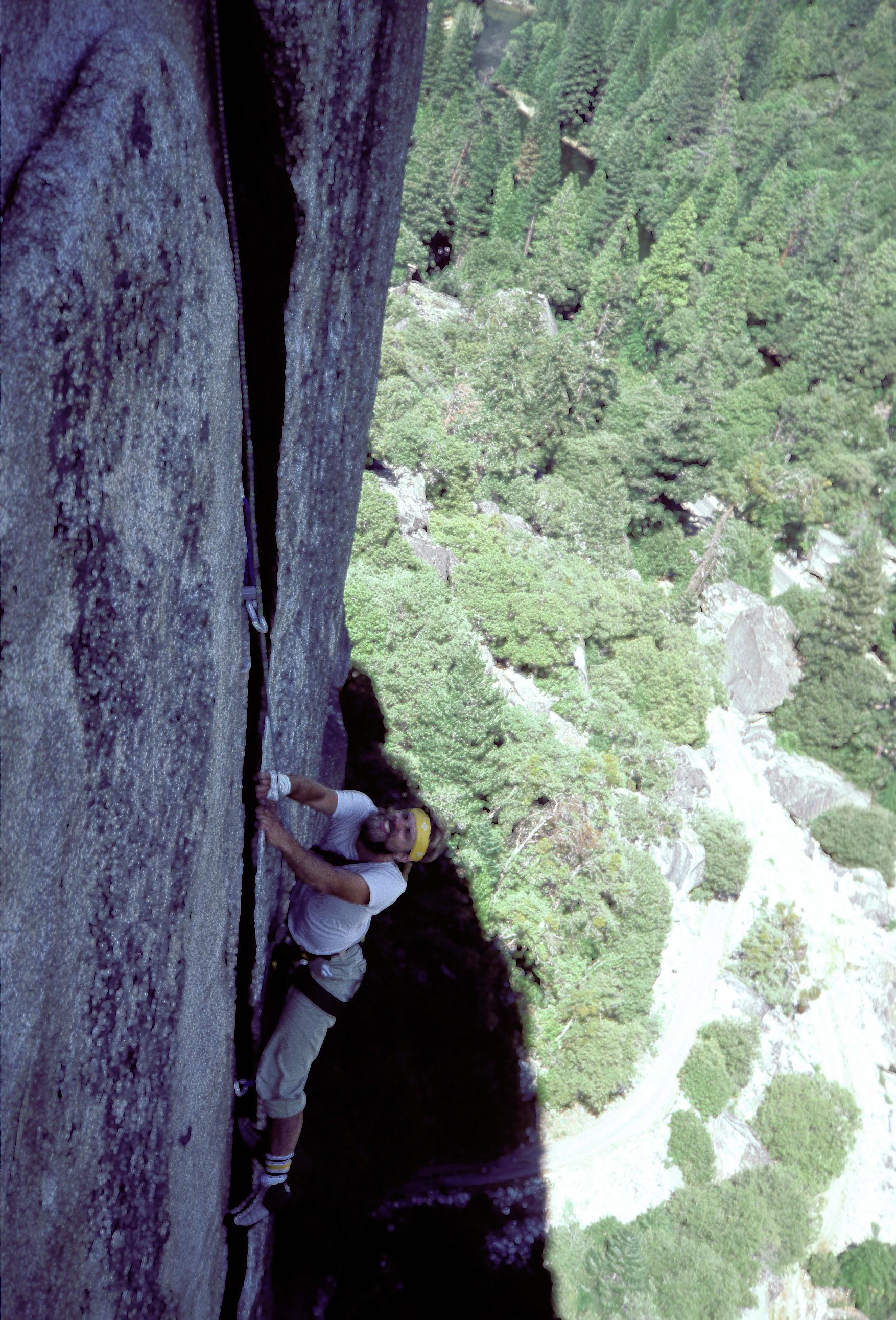| Title | Rock Climber on exfoliation slab (Wheat Thin), Yosemite Valley, California |
|---|
| Description | The granitic rocks exposed the Yosemite Valley area are part of the Sierra Nevada batholith (from the Greek words bathos, deep, and lithos, rock). The batholith consists of plutons of Cretaceous age that intruded over about a 30 million year period. The rocks are generally called granitic because they are principally composed of K-feldspar, quartz and plagioclase. The ratios of these three minerals are different in different plutons, however. Some are true granites, but others are better named granodiorite or tonalite. This photo shows a rock climber climbing an exfoliation flake in granodiorite at a cliff called Arch Rock. Exfoliation of this sort is common when plutons from deep in the Earth reach the surface. The release of confining pressure leads to jointing and slabs eventually fall off. |
|---|
| Chronostratigraphy | Cretaceous |
|---|
| Lithostratigraphy | Sierra Nevada Batholith |
|---|
| Geologic province | Sierra Nevada |
|---|
| Location | USA ▹ California ▹ Merced. Near Merced. Yosemite National Park. |
|---|
| Photographer | Dexter Perkins. 1968. |
|---|
| Key words | Yosemite, granite, granodiorite, exfoliation |
|---|
| Tech details | 709 KB. Vista. Canon A1, Agfachrome 100. |
|---|
| GeoDIL number | 2398 |
|---|
 |
